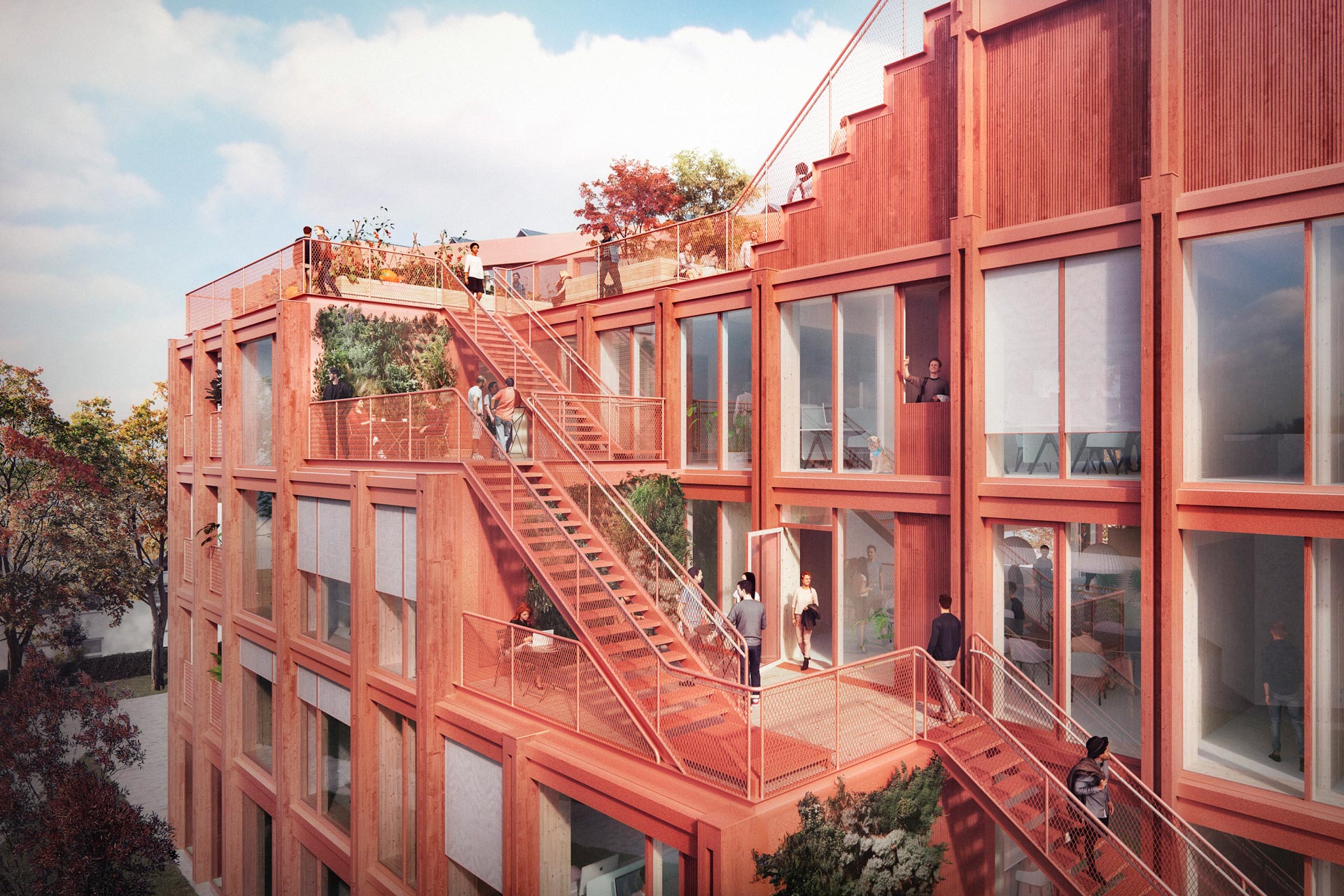New Office Building - Plambeck Campus, Norderstedt, Germany

The five-story building is planned as a new corporate headquarters and, with its CoWorking and CoLiving areas, is intended to become an innovative living and working environment, not only for the client himself. The future-oriented climate and energy concept aims at both, sustainability and high comfort. The building cubature is optimized for daylight. The CO2 footprint of the emissions generated during building construction, the "gray energy", is reduced by biogenic building materials. Energy-efficient technical systems, the use of local resources, and the generation of renewable energy on site ensure the lowest possible energy demand during use.
A proper balance of window area provides an ideal ratio between daylight use and low solar heat gain. Selective solar control triple glazing reduces heating loads and, in combination with external variable solar shading, ensures thermal protection in summer. These measures provide a high level of visual and thermal comfort with energy-efficient building operation.
Floor activation is planned for the building. This enables energy-efficient heating through low flow temperatures and can also to improve summer comfort through temperature control.
Decentralized, facade-integrated supply air units are provided for basic mechanical ventilation, while the exhaust air is extracted via central exhaust air shafts. For high air quality, the amount of supply air is defined by the number of people present and simultaneously reduced to a minimum air exchange rate. Demand-based ventilation and minimized ductwork result in significant energy savings for air handling and air delivery. In addition, openable windows are designed to allow natural ventilation. Through them, users have individual intervention options and thus further comfort.
A geothermal probe heat pump system is planned for the heat supply, with probes that also allow "free cooling" in summer. The discharge of heat into the ground equalizes the annual balance between extraction and injection of heat, regenerating the ground probe field. The deliberate elimination of chillers for active cooling has the added benefit of omitting rooftop technology areas for recooling, which creates more opportunities for greening, rain retention, solar power generation, and lounging. In order to ensure the goal of climate-neutral operation and also to quickly offset the ecological footprint of gray energy, the building should generate as much renewable energy as possible, so the proportion of space for photovoltaics should be as large as achievable.



